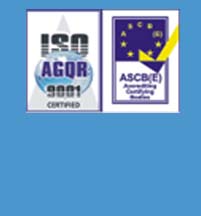Abstract:
Neem oil as a cause of poisoning is rare. Even small doses
of neem oil can cause severe metabolic acidosis along with
seizures which can be refractory. Late neurological sequelae
are also known.
Key
words: Neem oil, Poisoning, Status epilepticus
Introduction:
Neem oil has been used from times immemorial in Indian folk
medicine. We are reporting an unusual case of neem oil poisoning
which has caused serious neurological sequelae in a previously
normal child.
Case
Report
A 5 yrs previously healthy boy brought in status epilepticus
an hour after accidental ingestion of neem oil. On admission
his GCS was 5 with pupils dilated sluggishly reacting to light,
and brisk reflexes. Patient had tachycardia and dyspnea. Management
was immediately started but patient did not respond. He went
into cardio respiratory arrest. Resuscitation was done and
taken on mechanical ventilator. Midazolam drip was started
which controlled convulsions.
On admission BSL was 300 mg / dl, hemogram showed marked neutrophilic
leucocytosis, Serum Calcium 8.2 mg/dl, Serum electrolytes,
liver function tests, prothrombin time, activated partial
thromboplastin time were normal. Arterial blood gases showed
partially compensated metabolic acidosis.
The patient was gradually weaned off ventilator. On 3rd day
patient was conscious with GCS 12 with reflexes normal. MRI
scan of brain was normal. EEG done 7th day was also normal.
Other investigations repeated showed improvement except for
raised SGPT (816 U/L) and Blood Ammonia (102 mcg / dl) marginally
high. Though he showed improvement in general condition neurodeficits
remained. Higher functions were disturbed. Patient did not
recognize parents, was unable to sit without support and no
bladder or bowel control. There were choreoathetoid movements
of all limbs; speech was of incoherent sounds. Follow up after
2 months showed no improvement.
Discussion
Neem oil also known as margosa oil is obtained from neem plant
(Azadiracta indica Juss). Oil is extracted from neem seed
kernels. It contains neutral oils such as palmitic and stearic
acids. Active ingredients are terpenoids such as azadirachtin,
nimbin, picrin and sialin(1). It also contains Aflatoxin but
in very low concentrations. Azadirachtin is attributed with
pesticide action of neem oil (2). Neem oil is used as base
for many herbal medicines and also in cosmetic products (3).
It is also said to be effective as a contraceptive in males
(4).
There are few similar reported cases. (5, 6, 7) Practice of
instilling neem oil in infants and small children having ARI,
seen in South India and Indians in South East Asia(6), is
the causative factor in these cases. The usual features are
vomiting, drowsiness, tachypnea and recurrent generalized
seizures. (5, 6) The severity of symptoms is dose dependent.
Exact toxicity level doses are not known. Leucocytosis and
metabolic acidosis are significant laboratory findings (5,
6). Leucocytosis is usually of neutrophilic type and resolves
within first few days. Liver biopsy of 1 case showed fatty
infiltration and Reye’s like syndrome is attributed
to neem oil toxicity (5). Though liver enzymes are elevated
in some cases hepatic failure does not seem the major toxicity
in most cases.
No specific antidote is available. Management is aimed primarily
towards the control of convulsions. Gastric lavage is not
recommended. Cases with only mild vomiting and gastrointestinal
features fared better than those with CNS manifestations.
Supportive management is equally important. Prognosis is usually
good but fatalities and neurological deficits have been reported.(5,
6)
Key
messages:
Neem oil a very potent toxin with causing both immediate and
long term complications. Both presentation and management
are not well defined. As the use of neem oil as pesticides
and other medicines the cases of its toxicity are likely to
increase.
References:
1)
A Rahman and F. A. Talukder Bioefficacy of some plant derivatives
that protect grain against the pulse beetle; Callosobruchus
maculatesJournal of Chemical Ecology 1993; 19:2463–247
2)
H. Vatandoost1 and V.M. Vaziri. Larvicidal activity
of a neem tree extract (Neemarin) against mosquito larvae
in the Islamic Republic of Iran.Eastern Mediterranean Health
Journal 1995, 26: 180–2.
3)
Charmaine Lloyd AC, Menon T, Umamaheshwari K. Anticandidal
activity of Azadirachta indica. Indian Journal Pharmacology
2005; 37:386-389
4)
Garg S, Talwar GP, Upadhyay SN. Immunocontraceptive activity
guided fractionation and characterization of active constituents
of neem (Azadirachta indica) seed extracts. Journal of Ethnopharmacology
1998; 60:235-46
5)
Sinniah D, Baskaran G. Margosa oil poisoning as a cause of
Reye's Syndrome Lancet 1981, 1: 487-9.
6)
Sundarvalli N., Raju BB, Krishnamoorthy KA. Neem
oil poisoning, Indian J Pediatr. 1982, 49: 357-9
7)
Lai SM, Lim KW, Cheng HK, Margosa oil poisoning as a cause
of toxic encephalopathy Singapore Med J. 1990; 31:463-5. |







